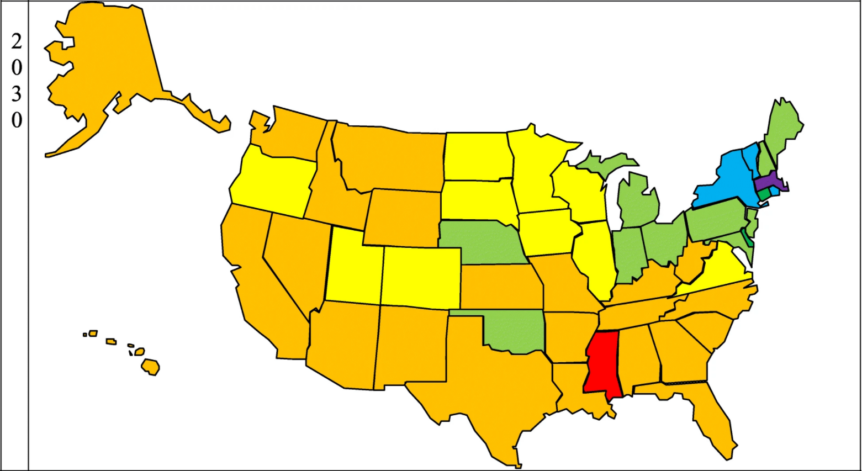It is projected that physician demand will grow faster than supply, leading to a total physician shortage of between 37,800 and 124,000 physicians nationwide by 2034.[i] Thankfully, leaders are looking for solutions to this shortage. On March 18th, 2021, a bill was introduced to the Senate to increase the number of residency positions eligible for graduate medical education payments under Medicare for qualifying hospitals in rural areas and health professional shortage areas. Currently, the law increases the positions by 200 per fiscal year beginning in FY2023. With the new proposed law, that number would increase more to an additional 2,000 positions per fiscal year from FY2023-FY2029.[ii] With this and reducing a physicians’ school debt, it will help to promote a larger future physician workforce.
The Physician Shortage Situation in Florida
In Florida only, there is a staggering shortage of physicians, especially primary care physicians. The Health Resources and Services Administration estimates that currently Florida already needs an additional 1,636 primary care physicians to address the existing shortage.[iii] The shortage is projected to grow to over 3,000 primary care physicians by 2025 and as high as 4,671 by 2023.[iv][v] In order to help combat this upcoming physician shortage epidemic, Florida’s current governor, Ron DeSantis, approved and signed the HB 607 bill on March 11th, 2020, which allows Advanced Nurse Practitioners with at least 3,000 hours of experience to work independently and operate primary care practices without an attending doctor’s supervision. The governor also approved qualified pharmacists who enter into specific agreements with physicians to treat chronic conditions. [1]
What You Can Do to Help Your Health Care Workers
Recruiting more international medical graduates to Florida can help to bring the shortage gap smaller. It would be a great benefit to work with lawmakers to also allow for easier licensing laws for physicians to obtain a second license in other states. Currently, the licensing procedure for a new state is not costly but time-consuming. For example, it can take anywhere from 2 to 6 months to obtain a Florida physician license.[2] Another key focus should be to make it easier for physicians to use telemedicine in their state and other states. This can help to treat patients in rural and underserved communities.
These tactics are truly thinking outside the box, but it doesn’t help to fix the underlying reasons for this growing problem. Also, mental health initiatives and self-care options to mitigate burnout are a good addition to a multi-faceted approach, but it shouldn’t be the only thing healthcare leaders are doing to solve the problem behind the shortage. Healthcare leaders must look at all avenues on what is causing burnout and the worsening physician shortage.
Embracing new technological innovations and support programs such as telemedicine, mobile health sensors, implementing a medical scribe program, and AI technology are all key steps in bringing healthcare to rural areas, reducing burnout due to the consistently worsening administration tasks placed on physicians, and allowing tools that can help monitor patients while the physician is seeing other patients.
Adopting these innovative pieces of technology, while also bringing humanization back to healthcare by a medical scribe program:
- Improves the efficiency of the practice
- Allows for more face-to-face quality interactions with patients
- Reduces medical errors
- Frees up the physician’s time to see more patients, while also allowing the physician to get home on time.
- Helps to improve the online reputation of the physician and practice
Utilizing these components helps many aspects of the deeply rooted issues of what causes burnout/ physician turnover.
We need to take action using a multi-faceted approach! We cannot rely on just one to expect the change needed to improve the underlying problems that are causing the shortage.
[1] https://floridapolitics.com/archives/322856-expanded-practice-pharmacists-aprns/
[2] https://mascmedical.com/florida-medical-license/
[i] https://www.aamc.org/media/54681/download
[ii] https://www.congress.gov/bill/117th-congress/senate-bill/834
[iii] U.S. Department of Health and Human Services, Health Resources and Services Administration, Bureau of Health Workforce. (2019). Designated Health Professional Shortage Areas Statistics: First Quarter of Fiscal Year 2020
[v] https://www.graham-center.org/content/dam/rgc/documents/maps-data-tools/state-collections/workforce-projections/Florida.pdf

